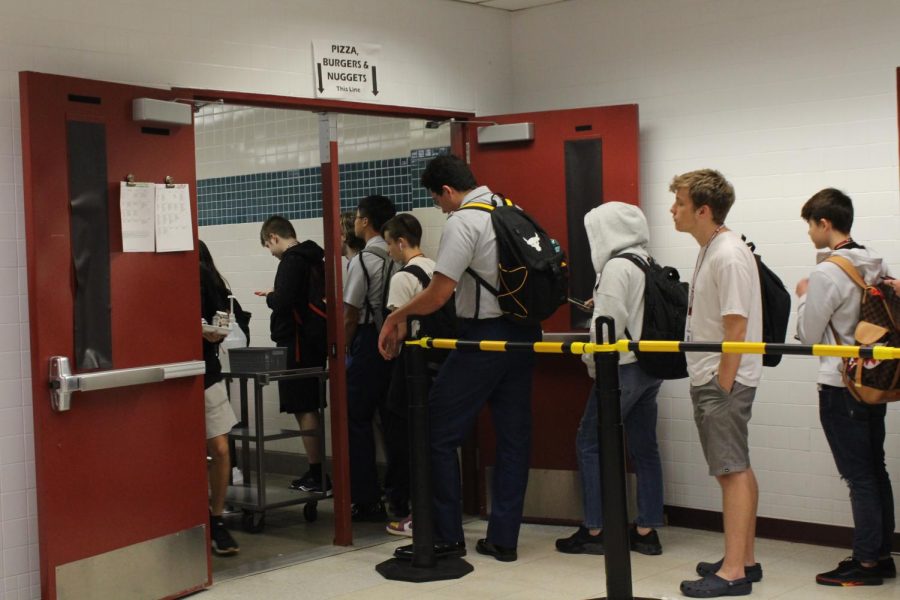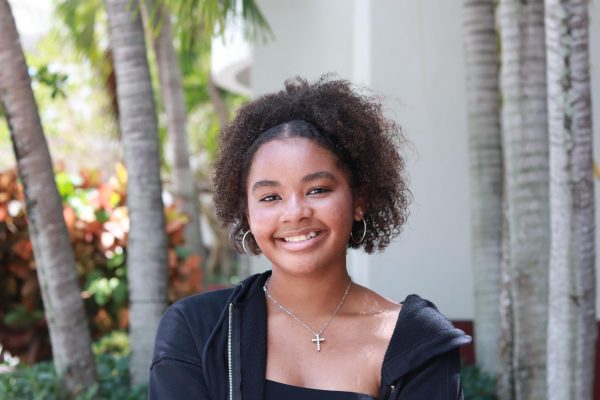MSD students voice their opinion on the return of fully-priced school lunch after COVID-19
November 1, 2022
Lunch is filled with a familiar sight, as students leave their respective classrooms and hurry to find a place to sit with their friends. Lunchboxes unzip, snack bags pop open and students file in line to purchase their meal; however, some find a surprise waiting for them at the checkout. Unlike the past two years, lunch at Marjory Stoneman Douglas High School is no longer free for all students.
During the COVID-19 pandemic, Congress approved the Keep Kids Fed Act, which provided additional money to fund school lunches. During this time, all meals in Broward County Public Schools were free, regardless of household income. Since the pandemic has slowed, some of these federal programs have expired. As a result of the change, students are now expected to pay for lunch like they did before COVID-19.
To receive meal benefits in Broward County, a family’s income must fall within the parameters set by the Federal Income Eligibility Chart. For example, a family of four making less than $51,338 annually, or $4,279 monthly, can be eligible for reduced lunches.
Broward County also requires families to complete the Meal Benefits Application for families who are eligible for free or reduced lunch. The county follows a program called Community Eligibility Provision (CEP), which provides a free-meal option to schools in low-income areas. If the student attends a CEP School, all lunch is free and no application is required. MSD is listed as a Non-CEP School, meaning the Meal Benefits Application must be completed.
This year, all lunch in Non-CEP high schools is $2.50 per meal. An additional $0.50 is added for milk. While lunch may cost money, all breakfast is free.
Many students at MSD are not eligible for any meal benefits because their household income does not fall under those outlined on the Eligibility Chart. Yet these students may have relied on the free lunches during the pandemic to save money; consequently, some students are upset by the price change.
Junior Xyanari Joseph has been buying school lunch since she began high school; she greatly benefited from the free lunches during the pandemic. Joseph does not fall within the Eligibility Chart guidelines and finds the sudden change from free to fully-priced lunch unfair.
“The prices for lunch are getting out of hand,” Joseph said. “I got used to eating lunch for free last year. Now that I see [what the prices are], I am a little scared. I am considering bringing lunch from home if this continues.”
Others, like freshman Joshua Brown, don’t mind the price changes.
“Even after a year of free lunch, I feel surprisingly normal buying lunch this year,” Brown said. “I’ve bought lunch in the past and I will more than likely pay for lunch for the rest of the year.
Brown is eligible to apply for meal benefits, but he claims since he will continue to pay for school lunch because it is convenient and isn’t expensive. Although lunch is only $2.50, the amount can add up over time.
Many students remain unaffected by the price changes. Senior Allison Lam is in a position where she does not have to pay attention to how much her lunch costs.
“To be honest, I wasn’t aware there was any price change,” Lam said. “I typically check the menu before [I buy lunch], not the prices. School lunch is very convenient for me, so I don’t mind the new prices.”
Despite its cost, school lunch is a healthy and practical alternative to bringing lunch from home. With the end of universal free lunches, students will have to adjust to how things were before the pandemic.











